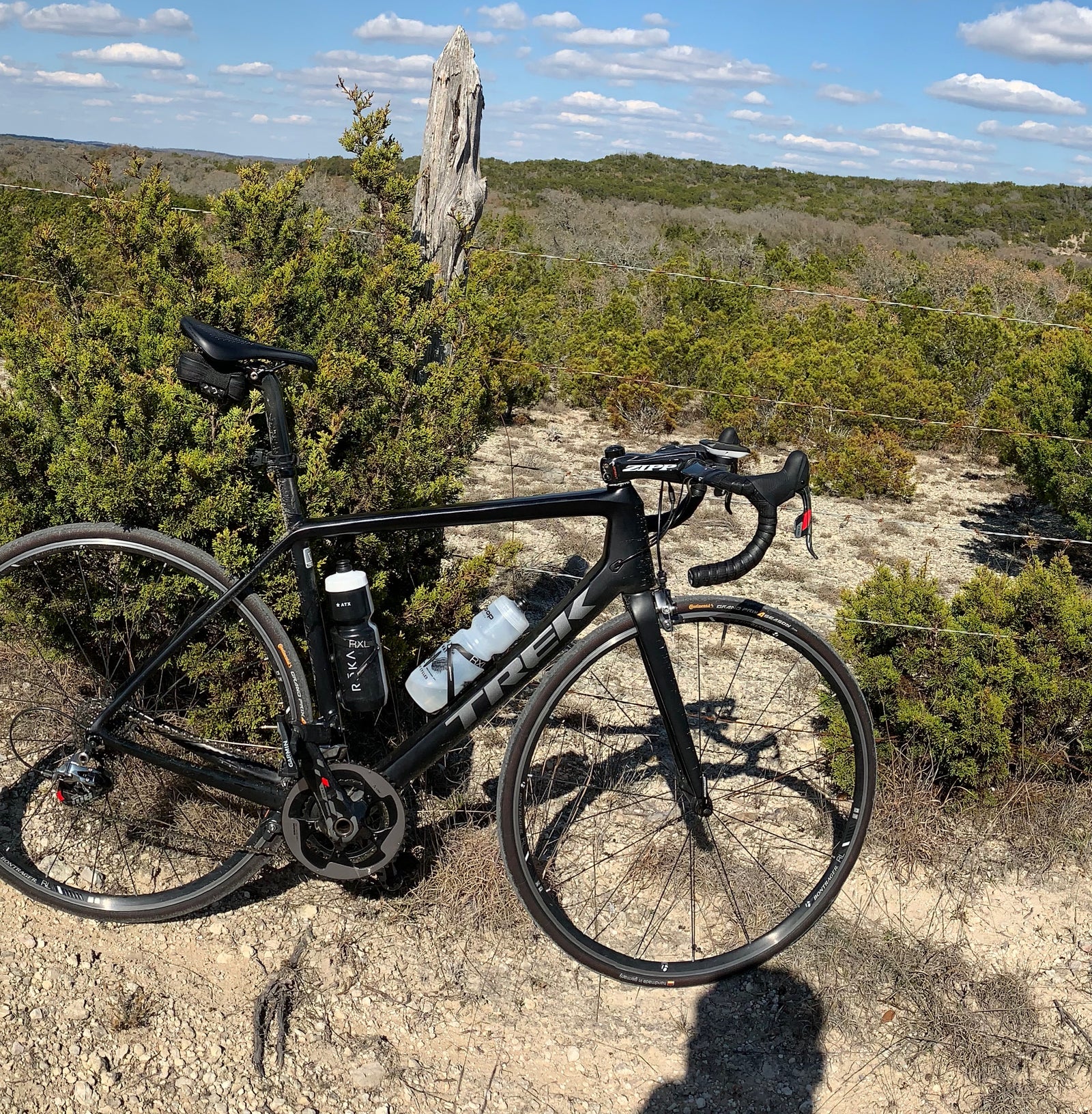BUYING A USED BIKE CAN BE HARD. LET US HELP!
The Ultimate Guide to buying a Used bike
It’s 2022 and the pandemic has left bike shops and bike companies with a huge shortage of new bikes, bike parts and equipment. Wait lists are long and new bikes are still selling out before you even see the marketing email.
It’s a tough time to be buying a bike. It’s a sellers market. So, if you’re in the market for a new (to you) bike, you’d be smart to look to the used market. Used bikes are/can be great! Buying a used bike, however, can be daunting. Like walking into the car dealership, or into a mechanic, not knowing what that sound in your car actually is. A few thousand dollars later, you still might be wondering if you got taken for a ride.
Well, Parc is hoping we can help just a little, by giving you our ULTIMATE GUIDE TO BUYING A USED BIKE. These are all our best tips to make the process more rewarding and more successful.
This article covers:
- 3 areas of caution - super important!
- Where to find used bikes for sale - the best sources
- How to evaluate a listing - is it a good deal?
- After you buy - what to do first?
Obviously, first, what bike am I looking for? What kind of bike do I need, or what kind of bike should I buy? Do I need a mountain bike? Or, should I buy a road bike? What brand? What model? That’s a huge decision! Luckily, we have a blog post on that too! See that postHERE.
If you’re just diving into a new cycling discipline or are new to cycling altogether, don’t worry about the brand, model and year specifically. You really just need to know whether you want a road bike, mountain bike, hybrid, e-bike, gravel bike etc. In the used market, there’s (understandably) less room for pickiness. You can only choose from the bikes folks are selling.
CAUTION!
Once you’ve decided what kind of bike you need and want, we’re ready to start scouring the listings. Before you do that though, let us share a few words of caution, or best practices for safe buying. There are threespecific ways to walk away from a sale stuck with the wrong bike. You need to be careful about:
DAMAGE
Used bikes will have a normal amount of wear, usually correlated to their age if they’re regularly ridden. Small paint chips and dings are expected. We'd consider this all "wear" that is ok. Real damage is not ok. You will likely come across bikes for sale that have larger dents, small cracks or "repaired" damage. Maybe the seller has a really low price, or they say it’s been fixed, or that it doesn’t affect the ride… yada yada yada. Just avoid it. Don’t look, don’t be tempted. Better to stay away.
BIKE FIT
So, how do I tell which bike is the right size? Obviously, test ride if you can. What if I can’t test ride? First, look at the company’s relevant size chart for the model bike you’re looking at. Just google the make, model and year of the bike, and you’ll likely find the website for that bike with a size chart link. Once you have the size you shouldbe check out forums by googling “How does X BRAND Y MODEL fit?” So, for example, search “How does the Specialized StumpJumper fit?” If you specifically look for forum posts from sites like Reddit, Pinkbike, Weightweenies etc, you might be able to find some first hand knowledge on other people’s height and inseams and their comfort on the bike you’re considering.
It almost goes without saying, but try your best to buy locally specifically so you can test ride the actual bike. In lieu of that, sometimes shops nearby will have the model you’re considering, so you can use the shop to gauge the correct size before buying. Just maybe buy something at the shop too, to thank them for the assist. And lastly, if you’re test riding in person, don’t be afraid to ask to adjust the seat. Be sure of fit before money exchanges hands.
FUNCTION
WHERE TO SHOP FOR A USED BIKE
Ok, time to shop! But, where are used bikes listed? How do I find all the bikes for sale in the area around me? Below are the sources we’d recommend. Are there other places to find used bikes? Yes. These are just the few we actually use and like and would recommend:
LOCAL SHOPS - most trustworthy
FACEBOOK MARKETPLACE - best for local bikes
FACEBOOK GROUPS - best for niche bikes & local bikes
Pro tip for these groups though - if you’re responding to posts, read the whole listing. We’ve sold plenty of bike gear on FB and it’s quite annoying how many people don’t read all the details and send unnecessary questions.
EBAY - best options/inventory
When shopping on Ebay for bikes, please remember a couple things.
- First, reviews and history of the Seller matter. The more positive reviews, the better. Look at their other listings. Do they look legit? The more cycling gear they’re selling, the more trustworthy they probably are.
- Also, watch out for damaged bikes. Read all the details. If it seems too good to be true, it probably is.
- Ebay has a ton of counterfeits. To avoid most counterfeit bike stuff on Ebay, use the “Item Location: USA” filter to weed out most of the generic, counterfeit, suspect and generally questionable equipment.
CRAIGSLIST - good local option
PINKBIKE BUY/SELL - best for MTBs
WINNER!
Ok, now that you’ve done your research and have identified some good looking listings, let’s evaluate them to find the best fit for you!
BIKE EVALUATION
Here's how we evaluate a used bike listing:
CONDITION
What condition is the bike in? We talked earlier about damage and function, but just looking at the bike or reading the listing, can you tell how well the bike is treated? Is it shiny and new looking? Or is it carrying a thick coat of dust and dirt? Hopefully, there are closeup photos. Are the logos/stickers on the bike in good shape? That’s a good indicator of what shape the bike is generally in. Any rust or corrosion visible? The materials on the seat, the grips or handlebar tape, the non-metal bits - do they look fresh and clean?
The more dirt, grime, cracking, peeling etc you can see, the less the bike is worth and likely the more work (read: $) it will need immediately and in the future, through maintenance and replacement parts. Always good to ask what parts are stock and what's been replaced, and when.
MODEL AND YEAR
Now, usually the question is how old is too old for a used bike? That’s the wrong question. The right questions are “does this bike do what I want it to do?” and “will it still work for as long as I want it to”? If you want a bike that will last a long time, you’ll likely need replacement parts at some point. Certain brands and models will have proprietary parts that may have ceased production. Googling the make, model, year and “issues?” will point you to forums with bike owners talking about parts and function issues they’ve run into. Also, consider your own progression. You don’t need to go crazy - you’re likely not going to be a pro. But if you’re buying your first mountain bike, think about how your skills might evolve. With time and practice, you could outgrow a truly entry level bike quickly. You’ll find yourself wanting better gearing, more suspension and maybe something lighter.
PRICE
So, now you're definitely wondering about price. How does condition and age affect price? How do I know if a bike is a good deal?
Let's talk price. Before that, a quick reminder that we’re in a seller’s market in 2022 still, so prices may be a little inflated. That said, these are the three best ways to price check a used bike:
Bicycle Blue Book Value guide
Ebay SOLD items
Ask cycling friends/group
The toughest variable to account for in the price of a used bike is upgrades. Let’s say a seller bought a bike five years ago and has added some nicer wheels, carbon handlebars and stem, and nice pedals, but all other parts are stock. Those parts are upgrades, yes, but they’re also used and of varying ages. Sellers usually assume their upgrades are worth more in the total bike price than they really are. For you to see the real value of these, head to Ebay and use the Sold Items filter like we discussed earlier. Search for the upgraded part, then filter to see only the sold items. You’ll get a great idea of what that part, used, is worth in a private party sale. You can kind of mesh that with the value ranges you got on Bicycle Blue Book for an updated total estimate.
We’ve now gone through what to look for, where to look, how to check the price. As for the actual buying, please be careful. Buying on the internet always has some risk. Use a payment method you trust. Inspect the bike in person before paying if possible, and if not possible, try to get the option to return the bike for a refund. Many Ebay sellers allow this.
If you’re going to see the bike in person, ride it around, shift the gears, pull the brakes. Ask to adjust the seat to judge the fit. Remember, stems can be shortened, handlebars narrowed or widened. Ask about when the last tuneup was, how old the tires are. Listen for noises, inspect bolts for rust, tubes for cracks and dents, check the serial number (make sure it’s there and not removed). Ask lots of questions about how they liked the bike, how much they rode it, where they ride typically, where they got the bike, what they are replacing it with.
Serious cyclists and the best bike owners keep documentation of the bike’s purchase and maintenance. Ask to see anything they have. They may even tell you the bike still qualifies for free or discounted maintenance if they bought it from a local shop. Satisfactory answers to these questions help give the buyer credit. If they are dodging questions, or don’t seem to know much about cycling and don’t have a good reason for being uneducated, buyer beware. Don’t feel pressured to buy just because you’re there in person. Totally ok to still walk away!
We’re not going to go over negotiating here - that’s pretty universal and not our particular expertise. Be polite though, don’t low-ball people. Do your research to determine a fair price and keep conversations respectful. We’re all cyclists after all!
Once you have your NEW-to-you USED bike, time to celebrate! Let’s fit it and ride it! We’re also not bike fit experts, so find a local shop that can do a good bike fit for you. Bike fits can be pricey but are 100% worth it. Your comfort and enjoyment of your new ride will be maximized. Expect to swap out a few parts that are body-size dependent. This is how you get a custom bike feel at a fraction of the price of a fully custom, new bike.
Only thing left to do is ride! Enjoy your new, smart purchase to the fullest. Put in the miles for years and years and when you’re ready, pass it on to another used bike shopper.
#RIDEPARC #RIDEBIKES #PARCTHENRIDE
Check out the Parc gear bag HERE! All your kit, tools, shoes, snacks, lights, parts etc, in one Bag, at home and on the road.


